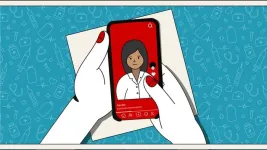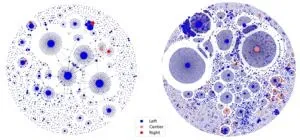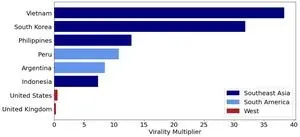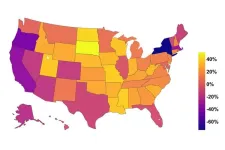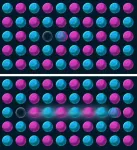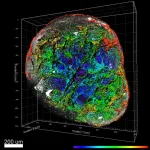(Press-News.org) TikTok and other short-form video platforms are booming in popularity — for entertainment and for sharing information, including health information.
Researchers are currently examining the effects of social media videos, and among them is Ciera Kirkpatrick, assistant professor of advertising and public relations at the University of Nebraska–Lincoln. Kirkpatrick, who studies the intersection of communication and health, recently turned her scientific eye toward TikTok.
In a newly published article, Kirkpatrick and co-author LaRissa Lawrie, a doctoral candidate at the University of Missouri, examined the effectiveness of TikTok videos to inform and encourage women to get a pap smear — the gold standard for screening for cervical cancer, which kills about 4,000 women per year in the United States. The scholars found that overall, short-form videos can be a good tool for informing and encouraging women to get regular pap tests.
“With TikTok, there have been a lot of news reports about how people, especially Gen Z, are using the platform as a source for health information,” Kirkpatrick said. “(My co-author and I) noticed that there was a lot of health messaging regarding pap smears, which are a really important preventative measure for cervical cancer. We were fascinated by what was being shared, and then we also found out that there has been a decline in the number of women in the U.S. who are getting a pap smear.”
Regular pap tests are a crucial piece in the prevention of cervical cancer because the disease often develops without symptoms. Pap smears are recommended every three years in most populations by the American Congress of Obstetricians and Gynecologists. In recent years, more women are skipping their pap tests. Overdue cervical cancer screenings jumped from 14% of women in 2005 to 23% in 2019, according to the National Institutes of Health.
In the study’s experiment, 636 females, aged 21-29, viewed videos that simulated those on TikTok about pap smears, varying in source (doctor or peer) and level of autonomy support — using either controlling/demanding language or language supportive of one’s choice. They then rated the videos for perceived message effectiveness, credibility, attitude toward message, and engagement intention.
They found that doctors were deemed more credible than peer sources, and that autonomy-supportive videos delivered by a doctor improved attitude toward the message and toward getting a pap test more than the peer videos. Regardless of source, autonomy-supportive messages were significantly more likely to receive engagement in the form of likes or shares.
“While autonomy support didn’t have a direct effect on their behavioral intention to get a pap smear, it helped with the engagement factor, which could lead more people to being exposed to the message,” Kirkpatrick said. “That’s important because the literature on pap smear rates has shown that one of the key reasons why women aren’t getting pap smears is because they simply don’t know that it’s something they should be doing. Getting that information in front of more people through engagement with a video can help overcome that barrier.”
Kirkpatrick said the results provide evidence that doctors creating short-form video content about pap smears is time well spent, but that peer messages play a role, too.
“People want to hear from credible sources with expertise and experience, but then they also want to see videos from people who are like them — hearing a perspective and relating to it,” Kirkpatrick said. “Both source types have value to people. They’re a little bit different, but both overall seem to have a positive effect.”
Kirkpatrick suspects the findings would translate to videos encouraging other preventative screenings and said that should be explored further. Currently, Kirkpatrick is also examining why more young women are turning to TikTok for health information.
“We’re hoping to better understand the motivations for using TikTok as a health source and what their perceptions are of the information they’re getting,” she said.
END
Study highlights use of TikTok to encourage cervical cancer screening
2023-10-05
ELSE PRESS RELEASES FROM THIS DATE:
K-pop fans helped COVID-19 public health messaging go viral
2023-10-05
Three years ago, as part of the public health messaging in response to the COVID-19 pandemic, the World Health Organization launched the "Wear A Mask" campaign on social media.
However, despite their benefits to public health, mask-wearing quickly became a highly politicized and divisive issue across the globe.
But the campaign gained impressive traction after World Health Organization Director-General Tedros Adhanom Ghebreyesus issued the following tweet on X, the social media platform known at the time as Twitter, on August 21, 2020, thanking BTS, a South Korean K-pop group, for supporting the mask-wearing public ...
Physicists find evidence for magnetically bound excitons
2023-10-05
In art, the negative space in a painting can be just as important as the painting itself. Something similar is true in insulating materials, where the empty spaces left behind by missing electrons play a crucial role in determining the material's properties. When a negatively charged electron is excited by light, it leaves behind a positive hole. Because the hole and the electron are oppositely charged, they are attracted to each other and form a bond. The resulting pair, which is short lived, is known as an exciton [pronounced exit-tawn].
Excitons are a key part of many technologies, including solar panels, photodetectors and sensors, as well as light-emitting ...
Dr. Julie Damp named ACC Annual Scientific Session Vice Chair
2023-10-05
The American College of Cardiology has announced Julie Damp, MD, FACC, as the next vice chair of the American College of Cardiology’s Annual Scientific Session. Damp will serve as vice chair for ACC.25 and ACC.26 and transition to chair for ACC.27 and ACC.28.
"ACC Annual Scientific Session is an incredibly impactful learning experience for cardiovascular care providers globally,” Damp said. “I am truly honored and excited to have the opportunity to work with the ACC team to provide effective and innovative education that impacts the care of our patients and expands the reach of cardiovascular science."
Damp is a professor of medicine in cardiovascular medicine ...
New research may make future design of nanotechnology safer with fewer side effects
2023-10-05
A new study may offer a strategy that mitigates negative side effects associated with intravenous injection of nanoparticles commonly used in medicine.
The study was published today in Nature Nanotechnology.
“Nanotechnology’s main advantage over conventional medical treatments is its ability to more precisely target tissues, such as cancer cells targeted by chemotherapy. However, when nanoparticles are injected, they can activate part of the immune system called complement,” said senior author Dmitri Simberg, Ph.D., professor of Nanomedicine and Nanosafety at the University of Colorado Skaggs School of Pharmacy ...
Climate intervention technologies may create winners and losers in world food supply
2023-10-05
A technology being studied to curb climate change – one that could be put in place in one or two decades if work on the technology began now – would affect food productivity in parts of planet Earth in dramatically different ways, benefiting some areas, and adversely affecting others, according to projections prepared by a Rutgers-led team of scientists.
Writing in the journal, Nature Food, the scientists described the results of computer models simulating varying climate scenarios and their impacts over time on the production of the world’s four major food crops: ...
Racial and ethnic disparities in glycemic control among insured adults
2023-10-05
About The Study: In this study of 4,070 insured adults with diabetes, disparities in poor glycemic control persisted despite adjustment for social, health care, and behavioral factors. Research is needed to identify the barriers contributing to poor control even in populations with access to care.
Authors: Sandra S. Albrecht, Ph.D., M.P.H., of the Columbia University Mailman School of Public Health in New York, is the corresponding author.
To access the embargoed study: Visit our For The Media website at this link https://media.jamanetwork.com/
(doi:10.1001/jamanetworkopen.2023.36307)
Editor’s Note: Please see the article ...
Changes in cannabis-attributable hospitalizations following nonmedical cannabis legalization in Canada
2023-10-05
About The Study: This study of 26.9 million individuals in four Canadian provinces found that cannabis legalization with restrictions was not associated with an increase in hospitalizations due to cannabis but commercialization was. The findings suggest that commercialization of cannabis may be associated with increases in cannabis-related health harms, including cannabis-induced psychosis.
Authors: Daniel T. Myran, M.D., M.P.H., of the Ottawa Hospital Research Institute in Ottawa, Ontario, Canada, is the corresponding author.
To ...
Generative AI for chest radiograph interpretation in the emergency department
2023-10-05
About The Study: In a representative sample of emergency department chest radiographs, results suggest that the generative artificial intelligence (AI) model produced reports of similar clinical accuracy and textual quality to radiologist reports while providing higher textual quality than teleradiologist reports. Implementation of the model in the clinical workflow could enable timely alerts to life-threatening pathology while aiding imaging interpretation and documentation.
Authors: Mozziyar Etemadi, M.D., Ph.D., of Northwestern Medicine ...
First epidemiological study links popular weight-loss drugs to stomach paralysis, other serious gastrointestinal conditions
2023-10-05
They’re being hailed as an effective way to lose weight, but diabetes drugs like Ozempic may come with a heightened risk of severe gastrointestinal problems.
That’s according to new research from the University of British Columbia showing that medications known as GLP-1 agonists—which includes brands like Wegovy, Ozempic, Rybelsus and Saxenda—are associated with an increased risk of serious medical conditions including stomach paralysis, pancreatitis and bowel obstruction.
While previous studies highlighted some of these risks in patients with diabetes, this is the first large, population-level study to examine adverse gastrointestinal ...
Human vascular organoids reveal clues for a potential COVID treatment
2023-10-05
When the new SARS-CoV-2 virus began killing thousands of people every week, physicians and scientists around the globe raced to learn why the new pathogen was so deadly. Among many early findings, experts noted that the infection played havoc with blood circulation, both inflaming the linings of blood vessels and making the blood itself more likely to form dangerous clots.
Critically ill COVID-19 patients suffered pulmonary embolisms, deep vein thrombosis (DVT), arterial thrombosis, as well as microvascular thrombosis affecting tissues of the lungs, kidneys, and heart.
Doctors tried a wide array of existing medications in hopes of controlling the blood system impacts, with mixed ...
